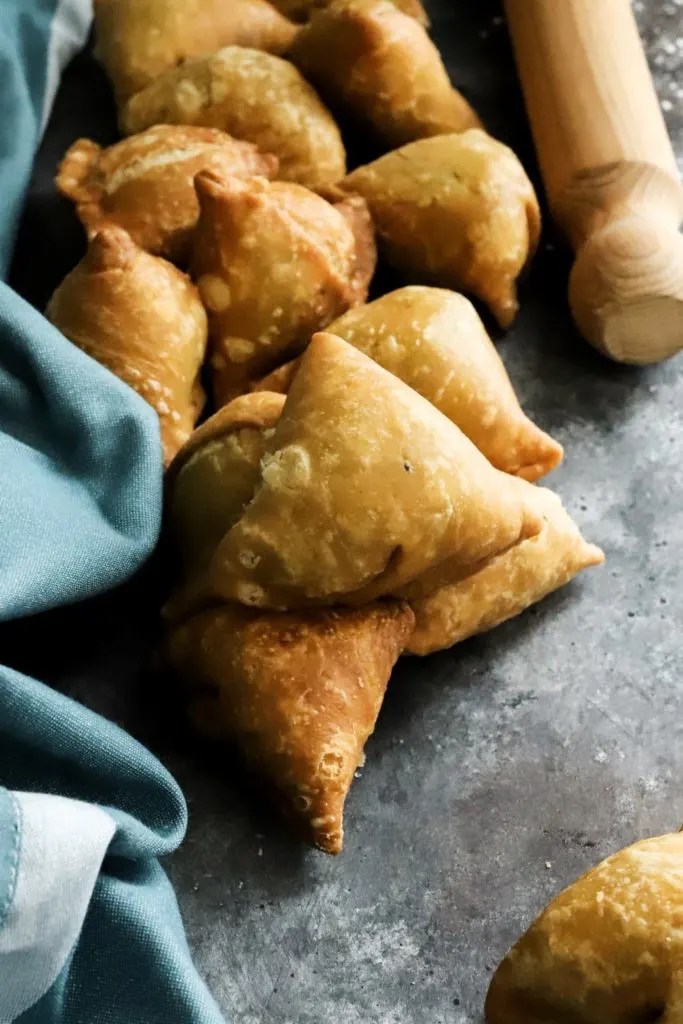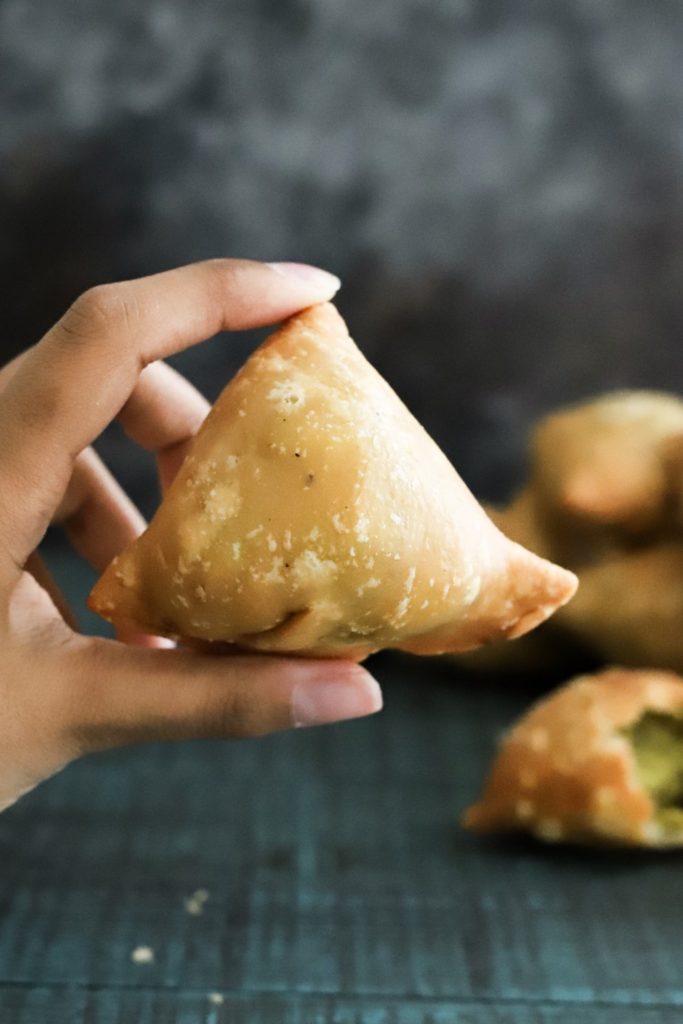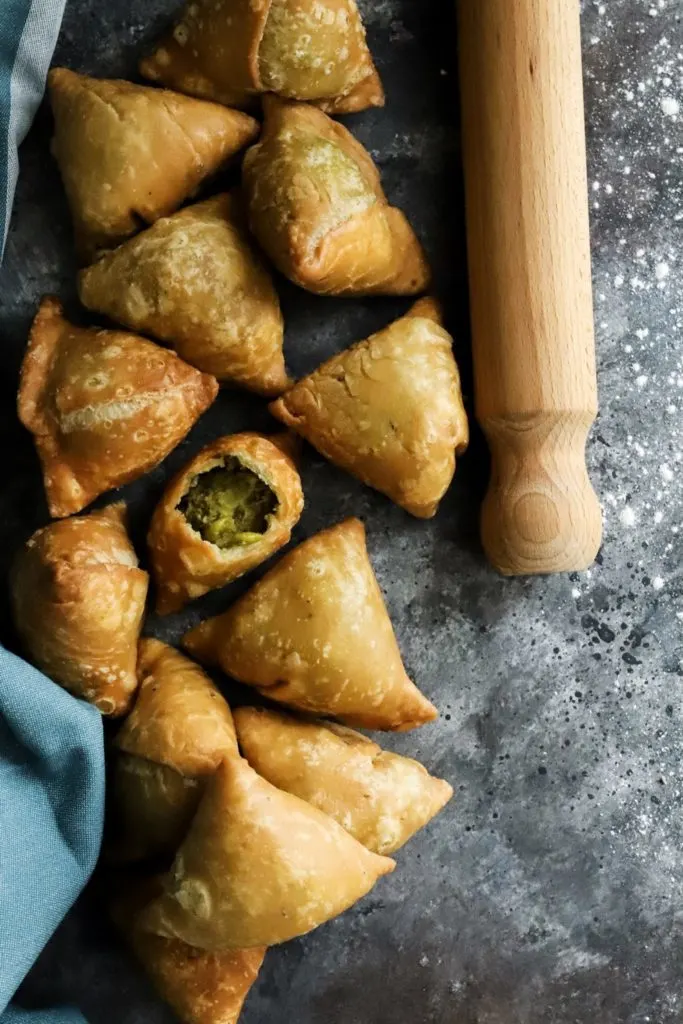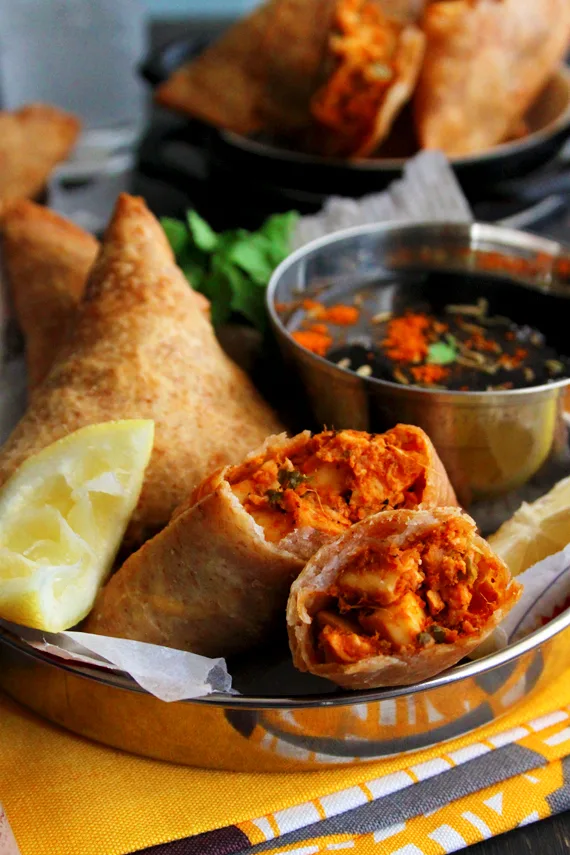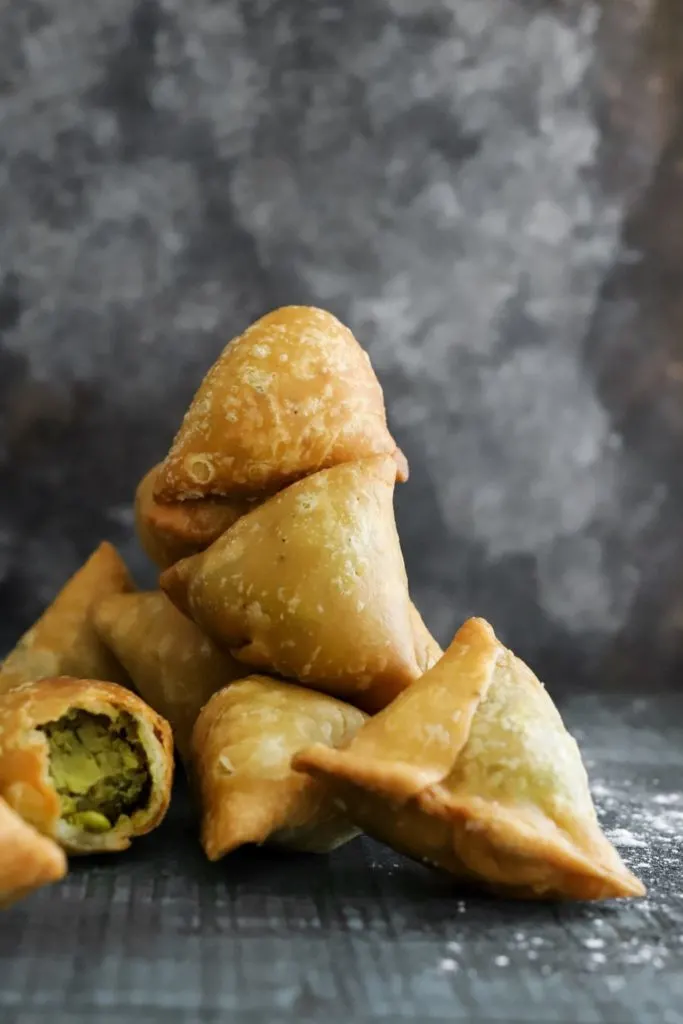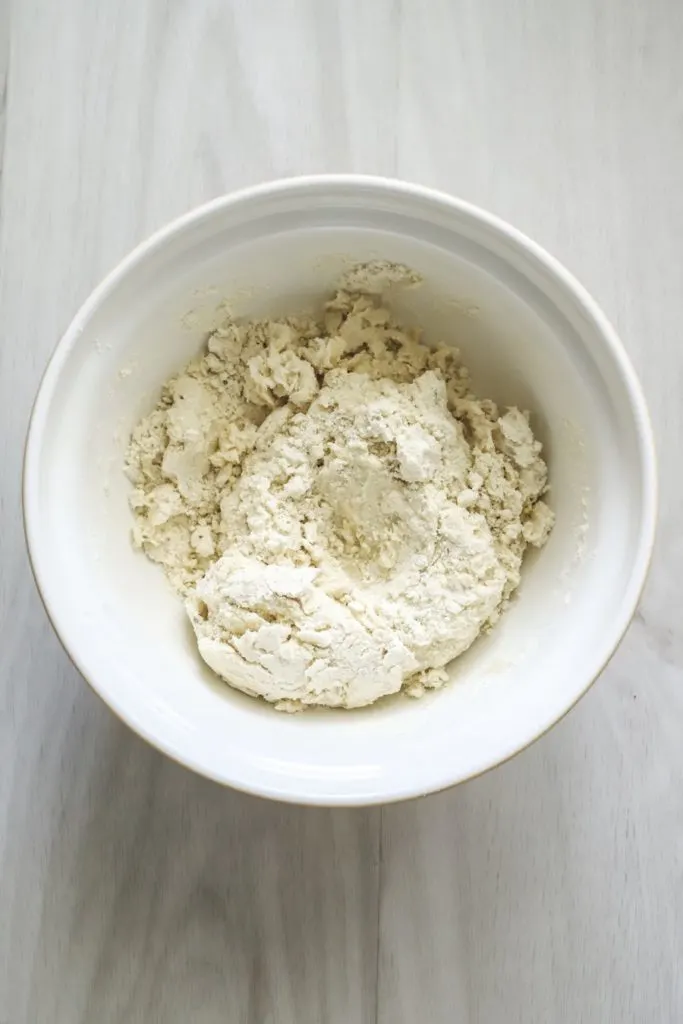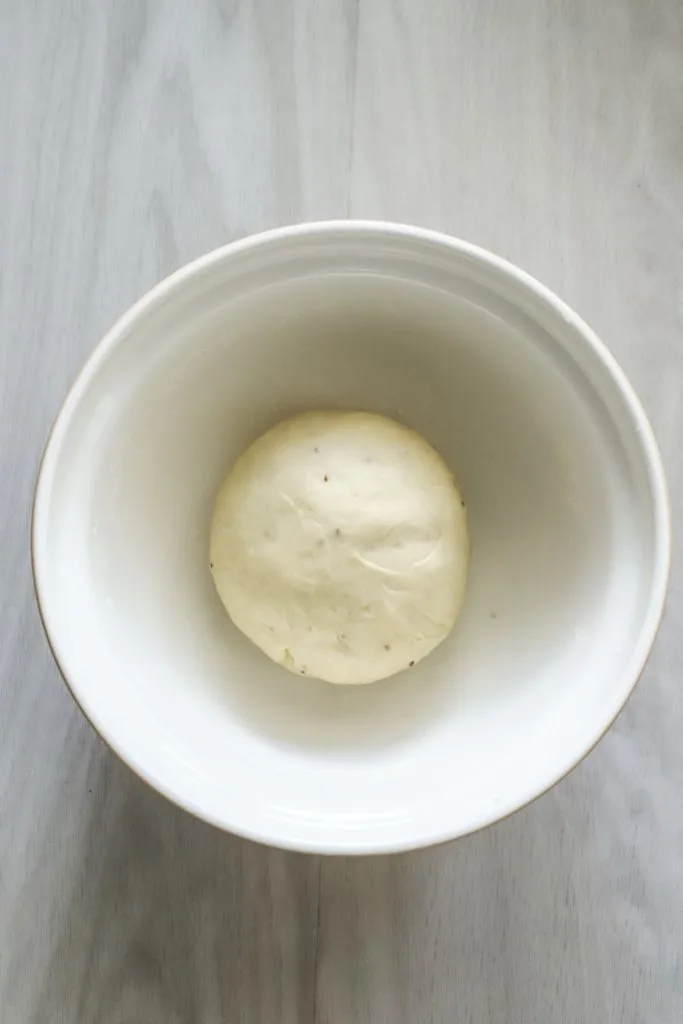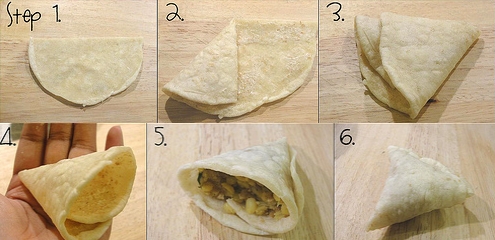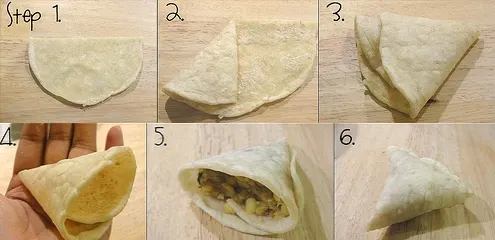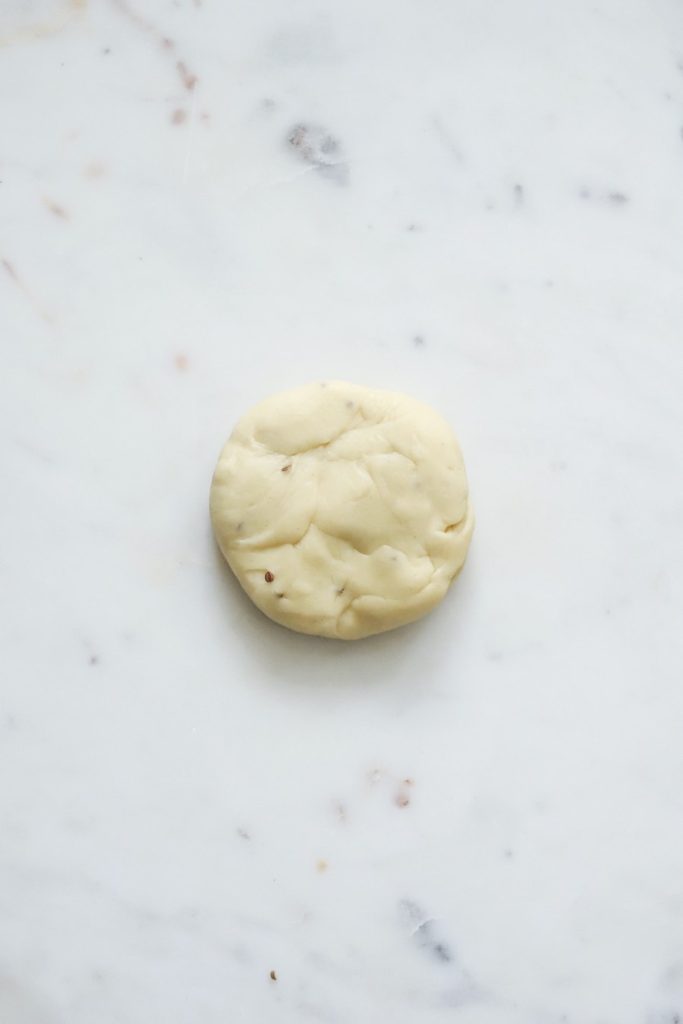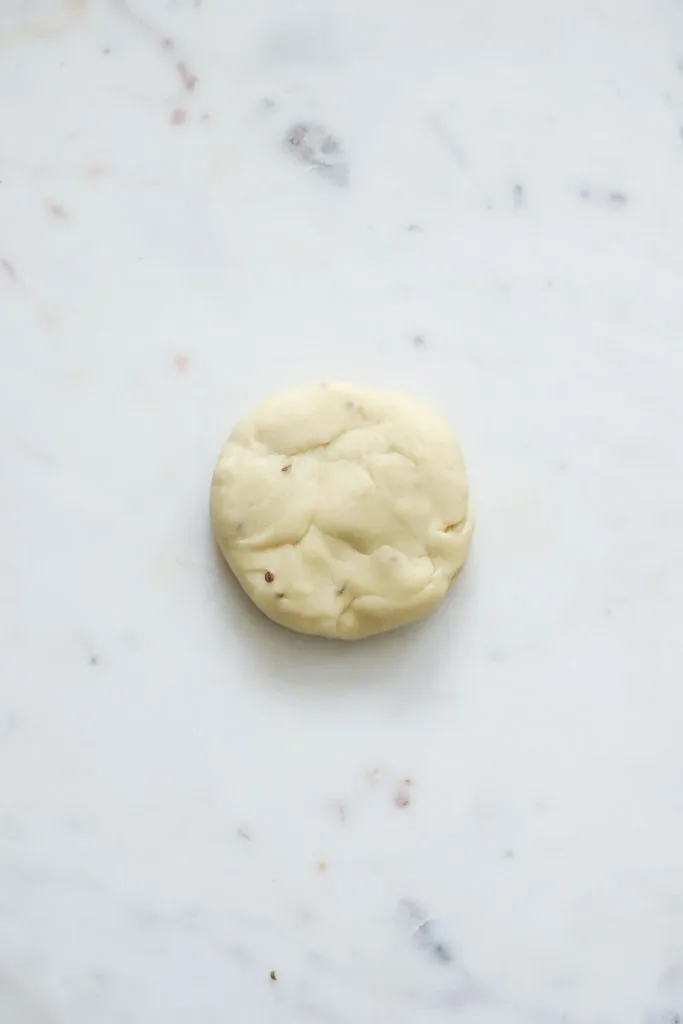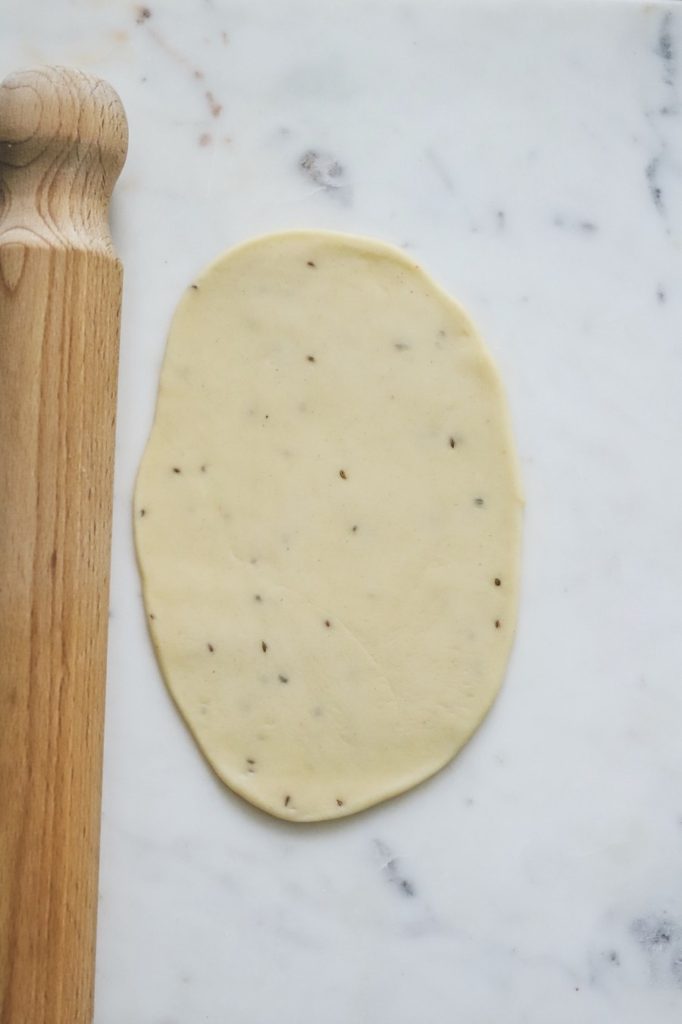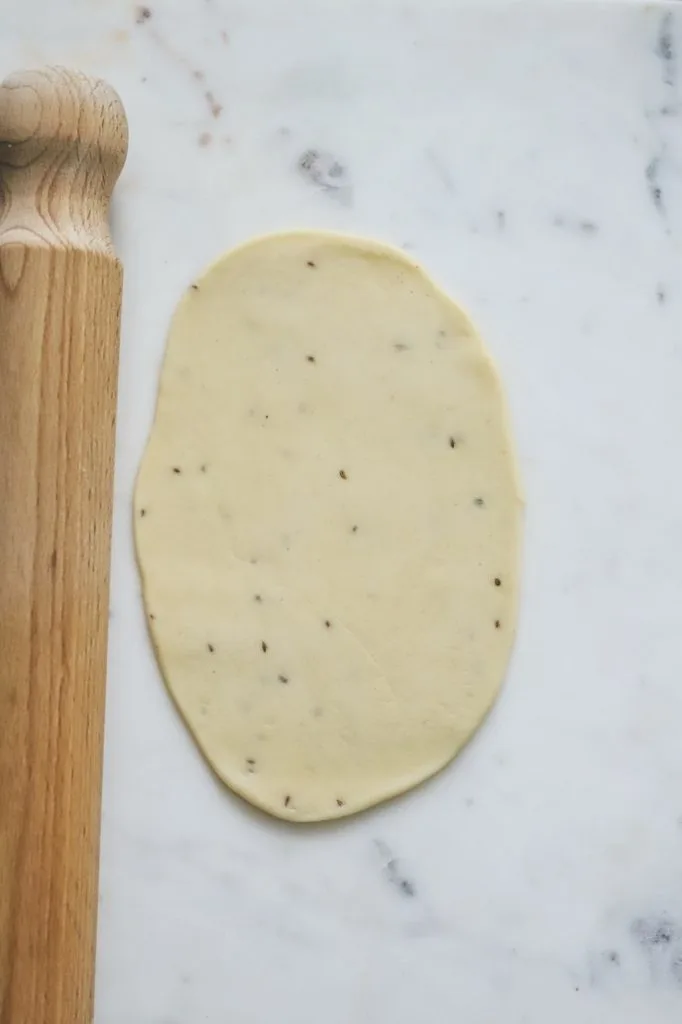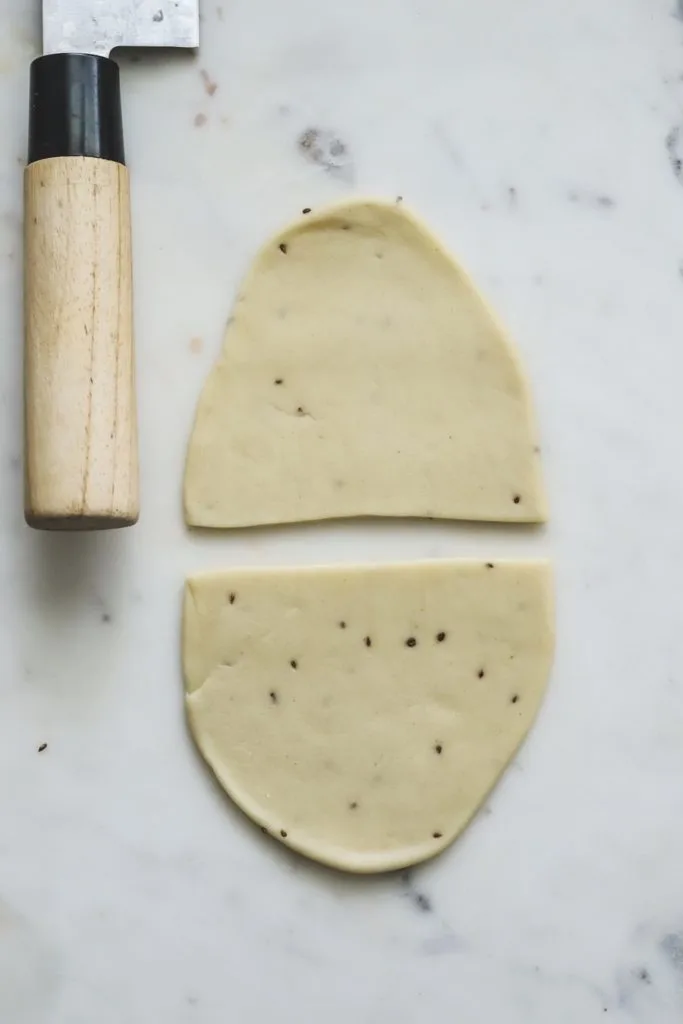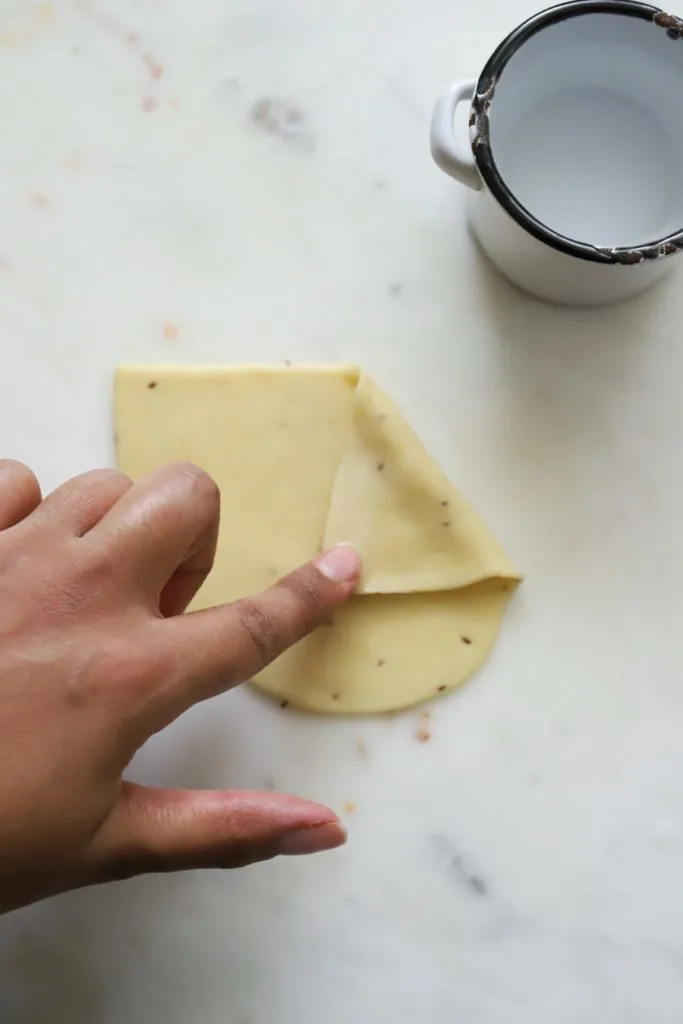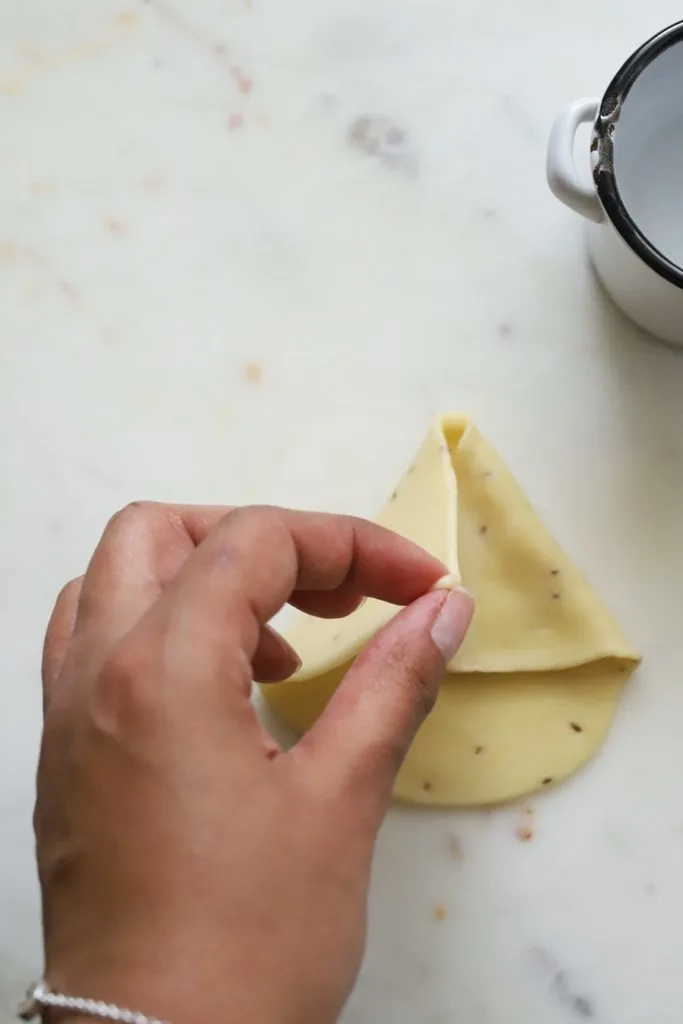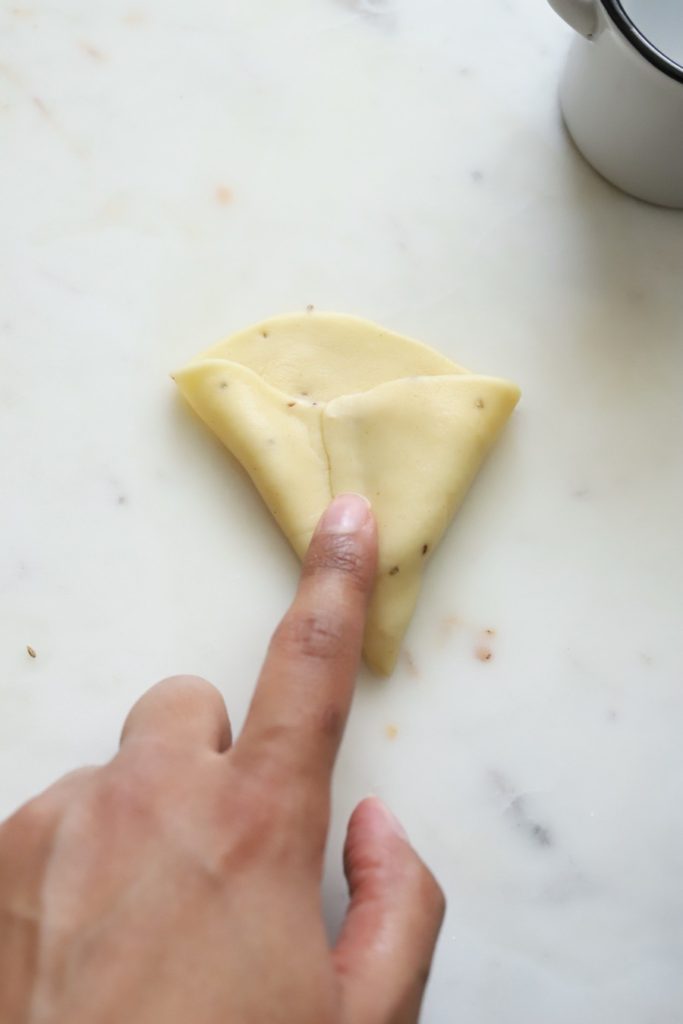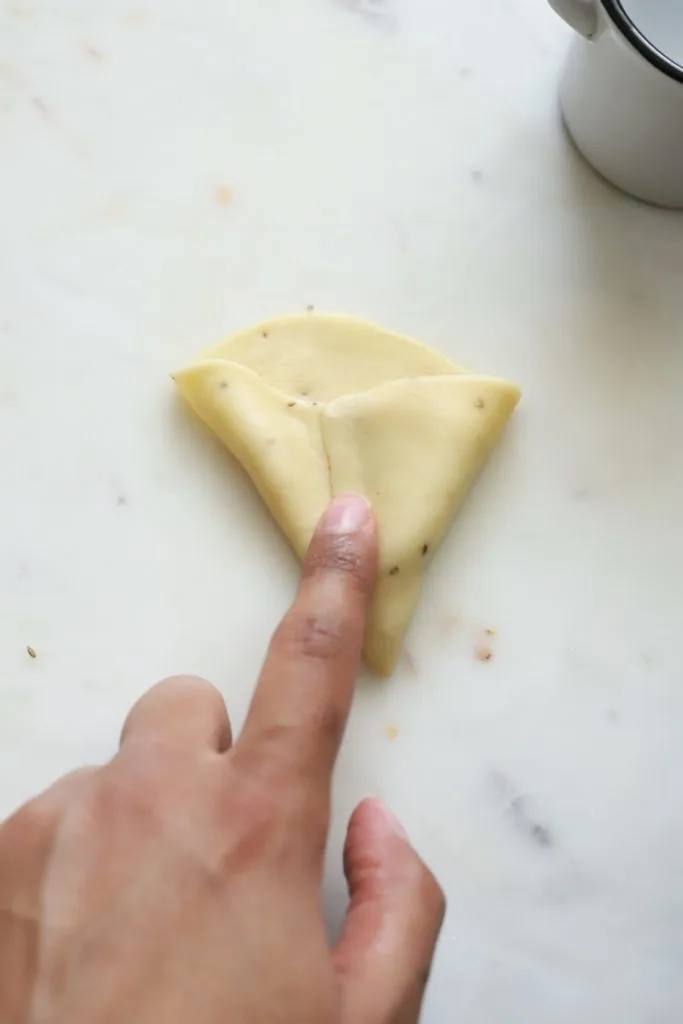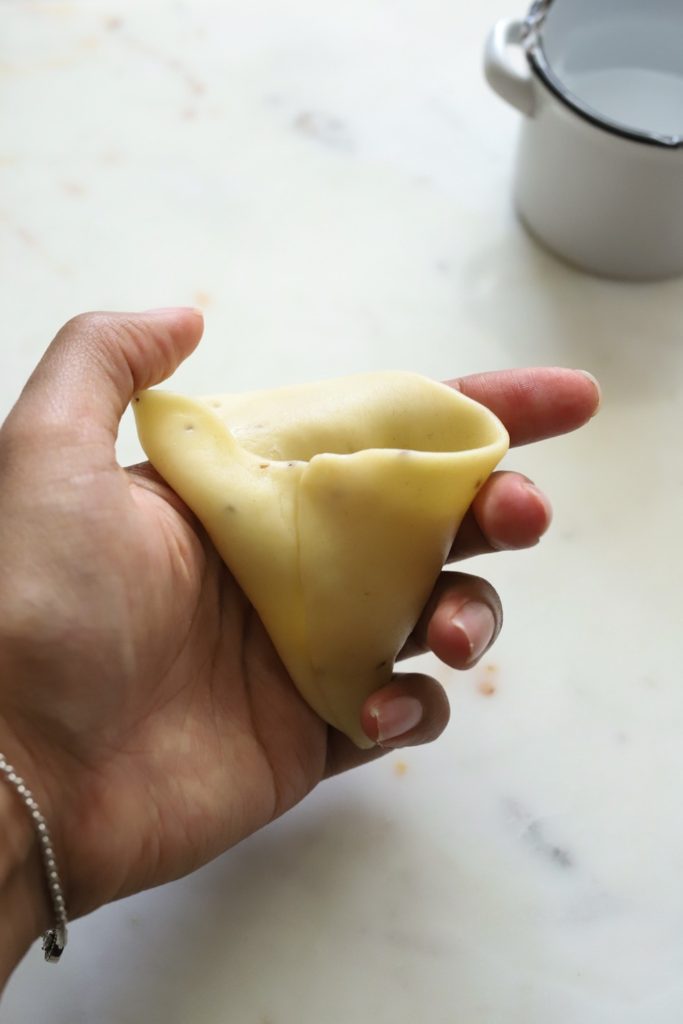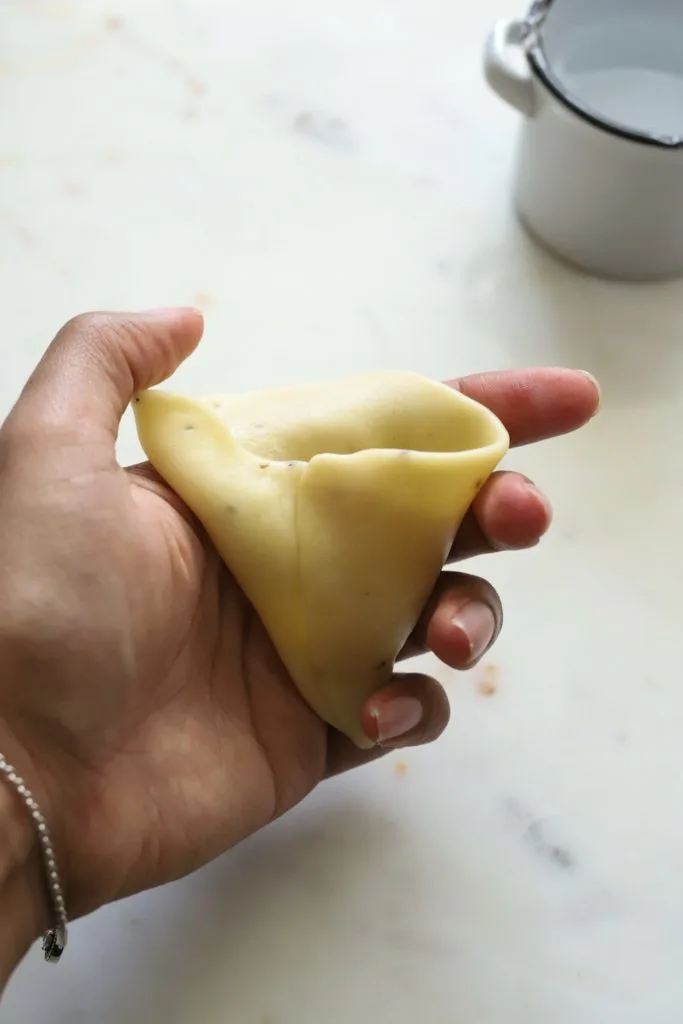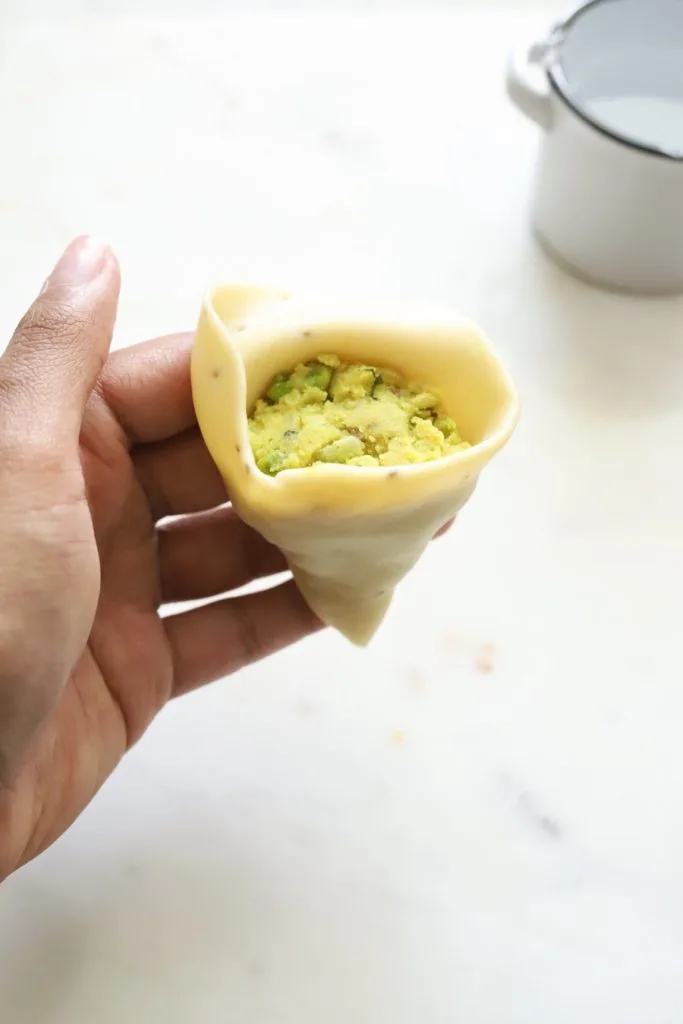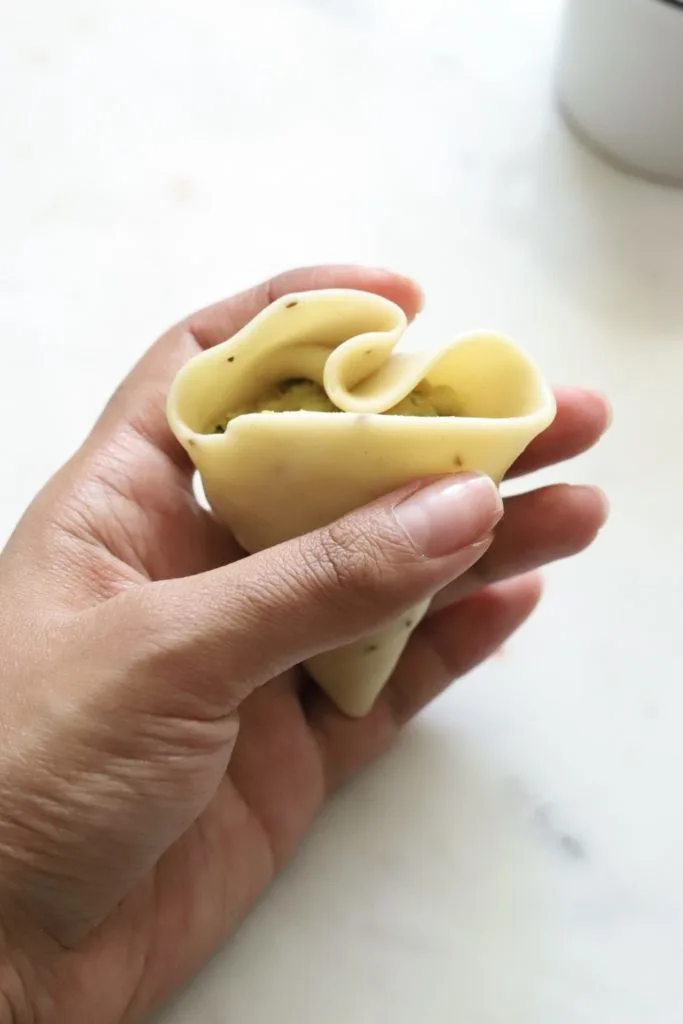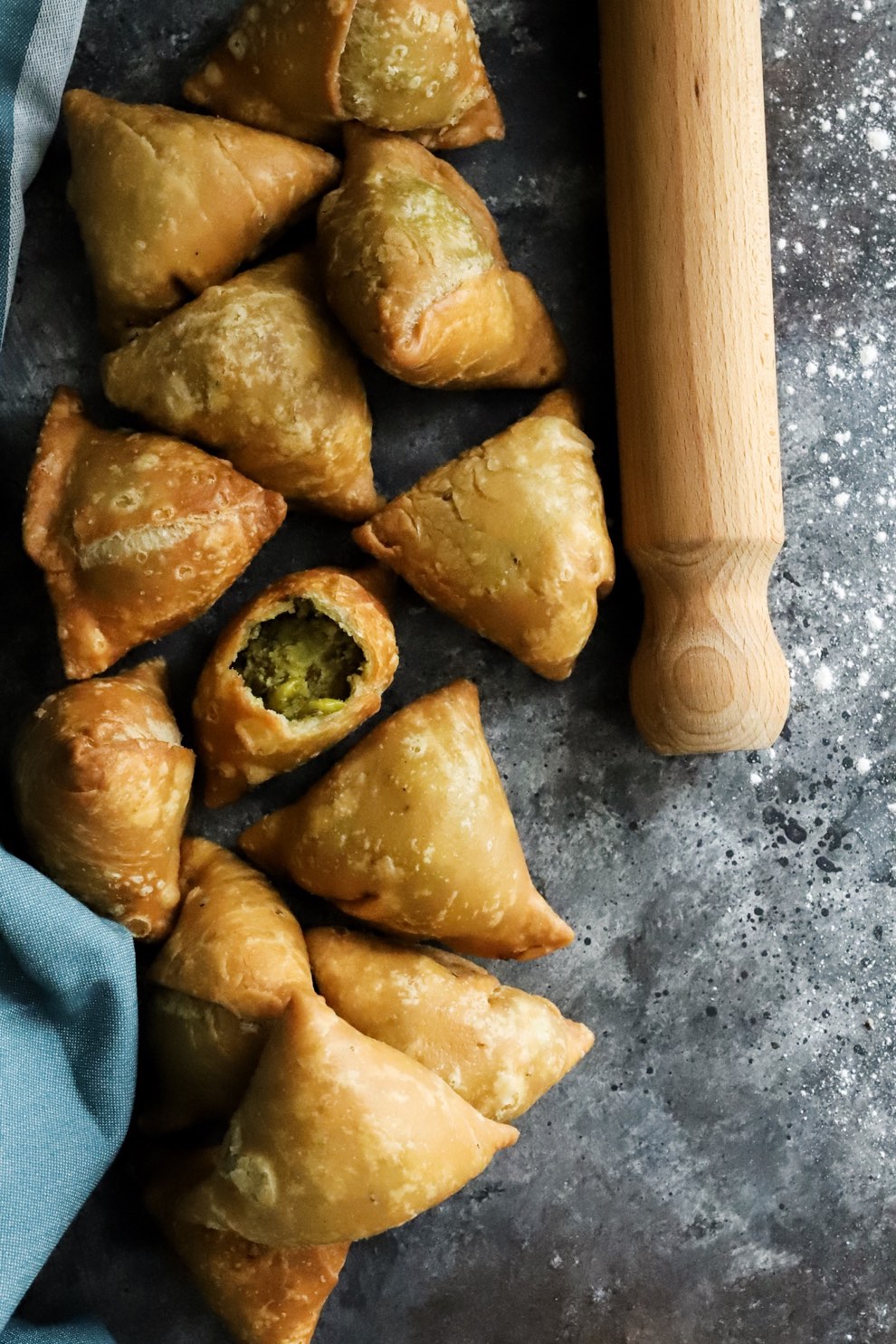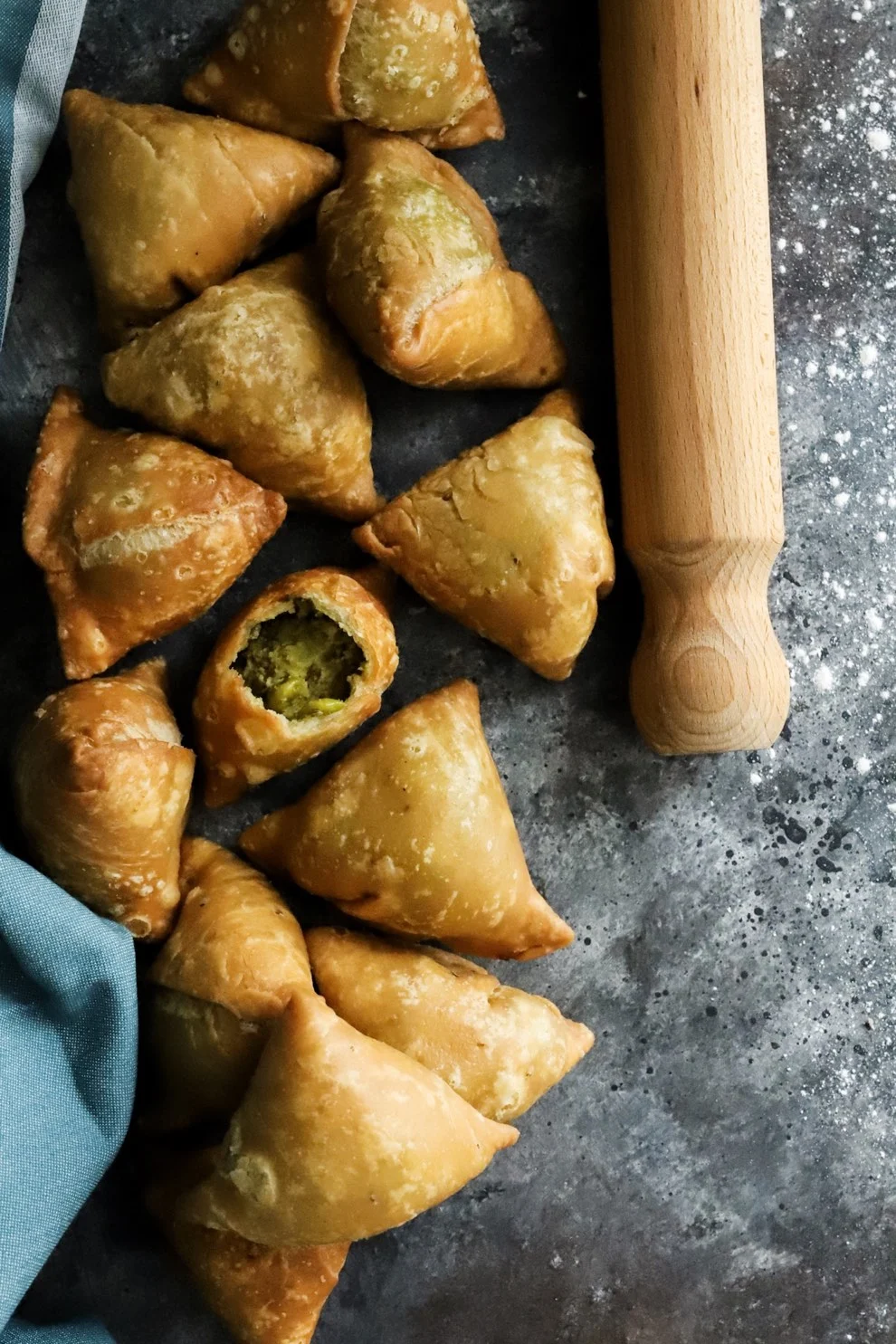No two samosas are ever identical in shape and colour — you could say they’re as unique as we are.
Love triangle: the significance of samosas in Indian culture
The palm-sized dumplings are iconic of street stalls and restaurant menus alike. Indian festival banquets wouldn’t be complete without them, either. In fact, I’ve overheard murmurs of outrage at the lack of samosas at a dozen Indian weddings. They’re expected to show up and perform like it’s their first day working a demanding job. An occasion simply isn’t an occasion without samosas. Casual events also require a samosa platter or five, too. We snaffle them over chai with friends, and stash a few away to devour once all our guests have left after a gathering at home. Keeping a stash in the freezer is common for when last-minute guests show up.
Homemade Samosas: The filling
Although there are countless fillings to choose from, potatoes, onions and peas will always be the poster child for samosas. The potatoes are usually boiled whole, with the skin on so the inside remains tender and fluffy. Once cooled, the skin-on spuds are peeled and roughly mashed before being united with a mixture of softened onions, spices and green peas. Other common vegetarian fillings include: soy mince (kheema), cauliflower and peas, Tandoori Paneer, sprouted lentils, Maggi Noodles or Hakka Noodles (seriously). Some of the more modern takes on samosas are wild, but nevertheless, delicious.
Homemade Samosas: The spices
Amchur, or dried mango powder gives potato samosas a welcome tang alongside fragrant, lemony coriander seeds. These two ingredients cut through the richness of the craggy, crunchy fried exterior. Cumin, onion, chilli and salt add the earthy flavours you crave when only a deeply savoury snack will do.
Homemade Samosas: The pastry
First impressions matter! The pastry is one of the primary indicators of a good samosa. In my opinion you can instantly tell a good samosa from a bad one by the appearance of the pastry. My preferred method of making homemade samosas (for texture, flavour and ease) is to use the homemade “shortcrust” pastry.
Why is this pastry a great option?
It requires no pre-cooking prior to folding and filling the samosas. This method ensures a perfectly-crispy and robust samosa every time. The pastry is stiff enough to make light work of the stuffing and folding process. This means you don’t need to spend ages fixing tears and snags in the pastry. This is a very forgiving way of making samosas. If the pastry does in fact tear at any point, just pinch the dough together to seal again. Unlike filo pastry samosas, it’s okay if this type to look rough and ready. In my opinion, the craggier the samosa the better! The rough, pitted surface of samosas made with homemade pastry is the perfect carrier for chutney.The only question that remains is whether you’re a dipper or a full-blown dunker?
What is “moarn?”
This pastry recipe begins with rubbing together flour and oil to create a rough, breadcrumb-like texture. It’s similar to making shortcrust pastry, but uses oil in place of butter. Ghee can also be used, if that’s a flavour you like. The technique is called “moarn” in Hindi and it facilitates the creation of a crispy pastry for deep-fried snacks like samosas and kachoris.
How does it work?
This method works by creating a protective barrier between the flour and water which hinders the development of gluten in the pastry as it is kneaded. The dough must be kneaded until smooth and overworking the dough could lead to a soggy texture in the absence of rubbing the flour in oil. Note that the pastry in this recipe requires no pre-cooking prior to folding and filling.
Other ways of making samosas
Another method for making samosas using homemade “samosa patti” (or samosa pastry) requires homemade dough to be rolled thinly and partially cooked on a tawa before folding. You can see this technique in my recipe for Mung Daal Samosas. Samosas can also be made using shop-bought filo pastry, spring roll pastry or puff pastry, depending on the style you prefer. Some newer methods involve using shop-bought wholewheat wraps to wrap the samosa filling.
How to fold The Best Vegetable Samosas
Stuck on how to fold The Best Vegetable Samosas like a well-seasoned Indian aunty? I’ve got your back.
How to fry homemade samosas
Controversially, these samosas are not fried in hot oil; they are cooked in warm oil… for 35 minutes per batch. You should be able to comfortably touch the oil with your finger prior to adding samosas to the pan. Be careful not to heat it too much as this will result in uneven cooking. Simply allow it to cool down before adding the samosas. Very few small bubbles that slowly reach the top of the oil will indicate that the oil is the perfect temperature. Starting the cooking process in warm oil probably goes against all the laws of deep frying but when it comes to this type of samosa, this is the way to do it. This technique will not result in greasy samosas, I assure you.
Ingredients you’ll need for The Best Vegetable Samosas
Potatoes Peas Onions Cumin seeds Fresh ginger Chillies Turmeric Amchur (dried mango powder) Ground coriander seeds Salt Water Flour Ajwain Oil
Recipe for Homemade Vegetable Samosas
Pin this recipe for later!
If you like these, you’ll love my recipe for Easy Paneer & Vegetable Tikkis
Love Sanjana Share this recipe

